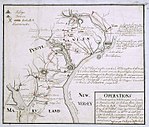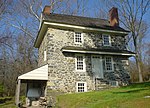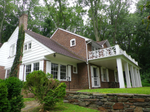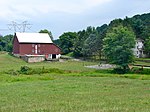Brandywine Wildflower and Native Plant Gardens
1974 establishments in PennsylvaniaBotanical gardens in PennsylvaniaChadds Ford Township, PennsylvaniaDelaware County, Pennsylvania geography stubsParks in Delaware County, Pennsylvania ... and 1 more
United States garden stubs
The Brandywine Wildflower and Native Plant Gardens are gardens at the Brandywine River Museum, located on U.S. Route 1 beside the Brandywine Creek in Chadds Ford, Pennsylvania. The gardens were established in 1974 to a design by F. M. Mooberry. In 1979 Lady Bird Johnson dedicated the gardens to Ford B. Draper and Henry A. Thouron for their contributions to the Brandywine Conservancy. The gardens include wildflowers, trees, and shrubs set within landscaped woodlands, wetland, flood plain, and meadow.
Excerpt from the Wikipedia article Brandywine Wildflower and Native Plant Gardens (License: CC BY-SA 3.0, Authors).Brandywine Wildflower and Native Plant Gardens
Hoffmans Mill Road, Chadds Ford Township
Geographical coordinates (GPS) Address Phone number Website Nearby Places Show on map
Geographical coordinates (GPS)
| Latitude | Longitude |
|---|---|
| N 39.8699 ° | E -75.59314 ° |
Address
Brandywine River Museum
Hoffmans Mill Road 1
19317 Chadds Ford Township
Pennsylvania, United States
Open on Google Maps









